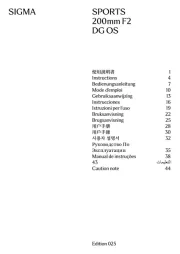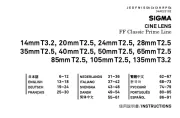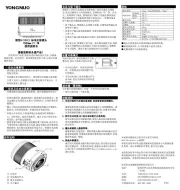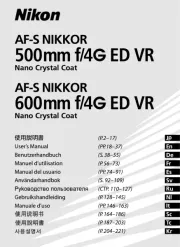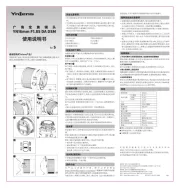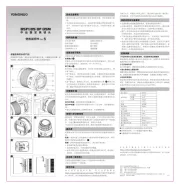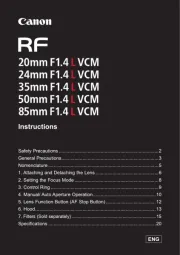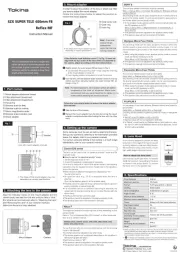
ƜƷƨƼƸŴǷǰȞȬȳǺǛƓᝰƍ൭NJƍƨƩƖƋǓƕƱƏƝƟƍLJƢŵஜᛟଢ
ǛƝችᛠƷɥŴȬȳǺƷೞᏡŴદ˺ŴӕǓৢƍɥƷදॖໜǛദƠƘྸᚐƠƯŴ
ϙჇજࢨǛƓಏƠLjƘƩƞƍŵƳƓஜᛟଢƸŴӲǫȡȩဇσဇƱƳƬƯƓǓLJ
ƢƷưŴႸƴǑǓƝ̅ဇǫȡȩƷᛆ࢘ሖǛƓᛠLjƴƳǓŴƝ̅ဇǫȡȩƷᛟ
ଢNjƋǘƤƯƝᚁƘƩƞƍŵƓᛠLjƴƳƬƨƋƱƸŴٻЏƴ̬ሥƠƯƘƩƞƍŵ
ӕǓৢƍǛᛚǔƱŴ̅ဇᎍƕͻǛƏӧᏡࣱƕƋǓLJƢŵ
ŠȬȳǺǛ˄ƚƨǫȡȩưŴٽᨗǍࢍƍήเǛᙸǔƱŴᙻщᨦܹǛឪƜƢ
ऀǕƕƋǓLJƢŵཎƴȬȳǺҥ˳ưٽᨗǛႺᙸǔƱŴڂଢƷҾ׆ƱƳ
ǓLJƢŵ
ӕǓৢƍǛᛚǔƱŴ̅ဇᎍƕᨦܹǛƏƔŴཋႎܹƕႆဃƢǔӧᏡࣱ
ƕƋǓLJƢŵ
ŠȬȳǺŴLJƨƸȬȳǺǛ˄ƚƨǫȡȩǛŴȬȳǺǭȣȃȗǛ˄ƚƳƍLJ
LJ્ፗƠƳƍưƘƩƞƍŵٽᨗƷήƕᨼήྵᝋǛឪƜƠŴ້໎ƷҾ׆Ʊ
ƳǔئӳƕƋǓLJƢŵ
ŠȞǦȳȈᢿƸᙐᩃƳ࢟ཞǛƠƯƓǓLJƢƷưŴᒰƴৢƏƱࣴƷҾ׆
ƱƳǓLJƢŵ
ŠɤᏩƸҗЎƴࢍࡇƷƋǔNjƷǛƝ̅ဇƘƩƞƍŵࢊƍNjƷǛƝ̅ဇƴƳ
ǓLJƢƱŴ᠃͂ƢǔऀǕƕƋǓLJƢŵ
ӲᢿỉӸᆅί 1ὸ
ձȕȭȳȈǭȣȃȗ
ղȕǩȸǫǹȪȳǰ
ճᙀяႎុᩉႸႮ
մਦዴ
յȕǩȸǫǹȢȸȉ
Џ੭ƑǹǤȃȁ
նǺȸȠȪȳǰ
շȞǦȳȈ
ἝἅὅဇỆếẟề
ƜƷȬȳǺƸŴᩓᄬǓೞನǛ᠍ƠƯƓǓŴȋdzȳᙌ AF ȬȳǺƴƓƚǔ Eǿ
ǤȗȬȳǺƱӷሁƷˁಮƴƳƬƯƍLJƢŵᘙ(A)ƴᚡ᠍ƷǫȡȩưƝ̅ဇƴƳǕLJ
ƢŵᲢŬҮƷೞᆔƸŴǫȡȩƷȕǡȸȠǦǧǢǛஇૼƷȐȸǸȧȳƴǢȃȗȇȸ
ȈƠƯƘƩƞƍŵᲣ
ŦȕǤȫȠɟაȬȕǫȡȩưƸƝ̅ဇƴƳǕLJƤǜŵ
Ŧᘙ(B)ƷೞᆔưƸƝ̅ဇƴƳǕLJƤǜŵ
ŦஇૼೞᆔƴƭƖLJƠƯƸŴEǿǤȗȬȳǺƴݣࣖƠƯƍǔƔŴƝ̅ဇƷǫȡȩ
ƷᛟଢưᄩᛐƠƯƘƩƞƍŵ
ἾὅἌỉბᏮ૾ඥ
ǫȡȩǁƷბᏮ૾ඥƸŴƓਤƪƷǫȡȩƷᛟଢƴࢼƬƯƘƩƞƍŵ
ŦȞǦȳȈ᩿ƴƸǓᡲѣဇŴAF ᡲѣဇƷᘺፗǍŴᩓൢໜሁƕƋǓLJƢŵǭ
ǺǍ൲ǕƕƭƘƱᛚ˺ѣǍᨦƷҾ׆ƱƳǓLJƢƷưƝදॖƘƩƞƍŵ
ᩧЈỆếẟề
ᩧЈƷൿܭ૾ඥƸŴƓਤƪƷǫȡȩƷᛟଢƴࢼƬƯƘƩƞƍŵ
ἦὅἚӳỪẶểἌὊἱὅἂ
ẎἉἂἰဇẆỿἶἠὅဇẏ
ǪȸȈȕǩȸǫǹưજࢨƢǔئӳƸŴȕǩȸǫǹȢȸȉЏǓ੭ƑǹǤȃȁǛ AF
ƴǻȃȈƠLJƢᲢ 2ᲣŵȞȋȥǢȫưજࢨƢǔئӳƸŴȕǩȸǫǹȢȸȉЏǓ੭
ƑǹǤȃȁǛ MᲢ 3ᲣƴǻȃȈƠŴȕǩȸǫǹȪȳǰǛׅƠƯȔȳȈǛӳǘƤ
LJƢŵ
ẎἝἅὅဇẏ
ǪȸȈȕǩȸǫǹưજࢨƢǔئӳƸŴǫȡȩǛ AF ȢȸȉƴǻȃȈƠƯŴȬȳǺ
ƷȕǩȸǫǹȢȸȉЏǓ੭ƑǹǤȃȁǛ AF ƴǻȃȈƠLJƢᲢ 2ᲣŵȞȋȥǢȫ
ưજࢨƢǔئӳƸŴȕǩȸǫǹȢȸȉЏǓ੭ƑǹǤȃȁǛ MᲢ 3ᲣƴǻȃȈƠŴ
ȕǩȸǫǹȪȳǰǛׅƠƯȔȳȈǛӳǘƤLJƢŵ
ŦǫȡȩƷȕǩȸǫǹȢȸȉƷЏǓ੭ƑƸŴƝ̅ဇƷǫȡȩƷᛟଢƴࢼƬƯƘ
Ʃƞƍŵ
ŦȞȋȥǢȫưȔȳȈǛӳǘƤǔᨥƴƸŴႸႮƕĐᲢᨂᢒᲣƷˮፗưNjᢒƴ
ȔȳȈƕӳǘƳƍƜƱƕƋǓLJƢƷưŴȕǡǤȳȀȸưᄩᛐƠƳƕǒȔȳȈǛ
ӳǘƤƯƘƩƞƍŵ
ƜƷȬȳǺƸŴ#( ƴǻȃȈƠƨLJLJưNjŴȞȋȥǢȫưȔȳȈᛦૢƕưƖǔೞ
ᏡǛ᠍ƠƯƍLJƢŵǪȸȈȕǩȸǫǹưȔȳȈǛӳǘƤŴǷȣȃǿȸȜǿȳǛ
ҞƠƠƨLJLJȕǩȸǫǹȪȳǰǛׅƠƯȔȳȈǛᛦૢƠƯƘƩƞƍŵ
LJƨƜƷȬȳǺƸŴǪȸȈȕǩȸǫǹƕ˺ѣƠƯƍǔưNjŴȕǩȸǫǹȪȳǰ
ǛׅƢƱȞȋȥǢȫƴЏǓஆǘǔž/( ЏǓஆƑೞᏡſᲢȞȋȥǢȫǪȸȐȸȩǤ
ȉᲣǛͳƑƯƍLJƢŵƝ̅ဇƷȞǦȳȈƴǑǓŴ/( ЏǓஆƑೞᏡƷஊјᲩј
ƷИᚨܭƕီƳǓLJƢŵ
ȞǦȳȈӸ MF ЏǓஆƑೞᏡ ̅ဇưƖǔ AF Ȣȸȉ
ǷǰȞဇŴȋdzȳဇ ஊј ǷȳǰȫᲢAF-SŴSᲣ
dzȳȆǣȋǢǹᲢAF-CŴCᲣ
ǭȤȎȳဇ ј ǷȳǰȫᲢONE SHOTᲣ
ŦК٥ǓƷ USB DOCK ƱǽȕȈǦǨǢžSIGMA Optimization ProſǛဇƍƯŴ
MF ЏǓஆƑೞᏡƷஊјᲩјƷᚨܭŴƓǑƼ MF ƴЏǓஆǘǔǿǤȟȳǰƷ
ᛦૢǛƢǔƜƱƕưƖLJƢŵᛇƠƘƸžSIGMA Optimization ProſƷȘȫȗǛ
ƝᚁƘƩƞƍŵ
ŦžSIGMA Optimization ProſƸŴࡴᅈǦǧȖǵǤȈǑǓ૰ưȀǦȳȭȸȉư
ƖLJƢŵ http://www.sigma-global.com/download/
ẎἌὊἱὅἂẏ
ǺȸȠȪȳǰǛׅƠƯŴஇᢘƳನƴƳǔǑƏƴໜុᩉǛ٭҄ƞƤLJƢŵ
ἧἻἕἉἷજࢨ
ǫȡȩƷϋᔺȕȩȃǷȥƸŴȕȩȃǷȥƷήƕȬȳǺᦟለƴƞƑƗǒǕǔƨNJŴ
Ɲ̅ဇƴƳǕLJƤǜŵ࣏ƣٳᢿȕȩȃǷȥǛ̅ဇƠƯƘƩƞƍŵ
ἧἾỴὊẆἆὊἋἚỆếẟề
ƜƷȬȳǺƸဒᚌƕ࠼ƘŴƦƷࣱឋɥŴ˂ƷȬȳǺƴൔǂƯȕȬǢȸǍǴȸǹȈ
ƕႆဃƠǍƢƘƳƬƯƍLJƢŵજࢨƷᨥƴƸȕǡǤȳȀȸǛᙼƖƳƕǒŴȕȬȤ
ȸǍǴȸǹȈƷཞ७ǛҗЎᄩᛐƠƯɦƞƍŵ
̬ሥẆӕৢɥỉදॖ
ŦൢƸǫȓǍᥢƷҾ׆ƱƳǓLJƢŵᧈ᧓̅ဇƠƳƍئӳƸŴʑ༞дƱɟደƴ
ࣱ݅Ʒᑣƍܾ֥ƴλǕƯ̬ሥƠƯƘƩƞƍŵȊȕǿȪȳሁŴ᧸ᖓдƷƋǔئ
ƴƸ̬ሥƠƳƍưƘƩƞƍŵ
ŦȬȳǺ᩿ƴƸႺਦưᚑǕƳƍưƘƩƞƍŵǴȟǍ൲Ǖƕ˄ƍƨƱƖƴƸŴȖ
ȭǢȸƔȬȳǺȖȩǷưӕǓᨊƍƯƘƩƞƍŵਦƷួƳƲƸŴࠊᝤƷȬȳǺǯ
ȪȸȊȸ෩ƱȬȳǺǯȪȸȋȳǰȚȸȑȸư᠉ƘਚƍƯƘƩƞƍŵșȳǸȳŴ
ǷȳȊȸሁƷஊೞ๋дƸዌݣƴ̅ǘƳƍưƘƩƞƍŵ
ŦƜƷȬȳǺƸ᧸൦ನᡯưƸƋǓLJƤǜŵᩋټǍ൦ᡀưƷ̅ဇưƸŴǒƞƳƍ
ǑƏƴදॖƠƯƘƩƞƍŵ൦ƕȬȳǺϋᢿƴλǓᡂljƱŴٻƖƳᨦƷҾ׆Ʊ
ƳǓŴ̲ྸɧᏡƴƳǔئӳƕƋǓLJƢŵ
Ŧ࣯ນƳภࡇ٭҄ƴǑǓŴȬȳǺϋᢿƴ൦ƕဃơǔƜƱƕƋǓLJƢŵ݊ƍދٳ
Ɣǒଡ଼ƔƍܴϋƴλǔƱƖƳƲƸŴDZȸǹǍȓȋȸȫᘥƴλǕŴԗƷภࡇƴ
ƳơLJƤƯƔǒƝ̅ဇƘƩƞƍŵ
Լឋ̬ᚰểỴἧἑὊἇὊἥἋỆếẟề
Լឋ̬ᚰƱǢȕǿȸǵȸȓǹƴ᧙ƠƯƸŴКኡƷż̬ᚰᙹܭŽǛƝӋༀƘƩƞƍŵ
ɼễˁಮ
ȬȳǺನᲢ፭
-
Უ 11 - 16 இٻજࢨ̿ྙ 1:4.9
ဒ ᚌ 122 - 84.1° இٻࢲ Xᧈƞ 102 x 131.5mm
இݱǓ 22
இჺજࢨុᩉᲢW - TᲣ 24 - 25.8cm
ٻƖƞƞƸŴǷǰȞȞǦȳȈƷNjƷưƢŵ
᪥
ㄒ㻌
ᜩԓ
දॖ
Thank you very much for purchasing a Sigma Lens. In order to get the
maximum performance and enjoyment out of your Sigma lens, please read
this instruction booklet thoroughly before you start to use the lens.
DESCRIPTION OF THE PARTS (fig.1)
䐟Front cap
䐠Focus Ring
䐡Distance Scale
䐢Focus Index Line
䐣Focus Mode Switch
䐤Zoom Ring
䐥Mount
FOR NIKON MOUNT
This lens includes an electromagnetic diaphragm mechanism, the same
specifications as the E-type mechanism in Nikon AF lenses. The lens is
compatible with the cameras listed in Table
(A).
(The models with the Ŭ mark
require the latest version of the camera firmware to ensure compatibility.)
ŦIt is not compatible with film single-lens reflex cameras.
ŦIt is not possible to use the lens with the cameras in Table (B).
ŦFor models not listed in Table
(A) or Table (B), please refer to the camera’s
instruction manual to check for compatibility of E-type lenses.
ATTACHING TO THE CAMERA BODY
When this lens is attached to the camera body it will automatically function in
the same way as your normal lens. Please refer to the instruction booklet for
your camera body.
ŦOn the lens mount surface, there are a number of couplers and electrical
contacts. Please keep them clean to ensure proper connection. To avoid
damaging the lens, be especially sure to place the lens with its front end
down while changing the lens.
SETTING THE EXPOSURE MODE
The sigma lens functions automatically after mounting to your camera. Please,
refer to the camera instruction book.
FOCUSING AND ZOOMING
This lens features Sigma’s built-in Hyper Sonic Motor (HSM). The HSM enables
quick and quiet autofocusing.
䛀SIGMA and CANON䛁
For autofocus operation, set the focus mode switch on the lens to the “AF”
position (fig.2). If you wish to focus manually, set the focus mode switch on
the lens to the “M” position (fig.3). You can adjust the focus by turning the
focus ring.
䛀NIKON䛁
For autofocus operation, set the camera to AF mode and set the focus mode
switch on the lens to the “AF” position (fig.2). If you wish to focus manually,
set the focus mode switch on the lens to the “M” position (fig.3). You can
adjust the focus by turning the focus ring.
ŦPlease refer to camera’s instruction manual for details on changing the
camera’s focusing mode.
ŦWhen operating this lens in manual focus mode, it is recommended that
correct focus be confirmed visually in the viewfinder rather than relying on
the distance scale. This is due to possible focus shift resulting from extreme
changes in temperature which cause various components in the lens to
expand and contract. Special allowance is made for this at the infinity
setting.
This lens also permits manual focusing even in the autofocus mode. While half
pressing the shutter button, rotate the focus ring to adjust the point of focus.
Also, this lens can offer [Full-time MF function] (Manual Override) by rotating
the focus ring of the lens while auto focusing is in operation. The default
setting of Full-time MF function varies for each mount.
Mount Full-time MF function Available AF Mode
SIGMA, NIKON ON Single AF (AF-S, S)
Continuous AF (AF-C, C)
CANON OFF Single AF (ONE SHOT)
ŦWhen using USB DOCK (sold separately) and its dedicated software, “SIGMA
Optimization Pro”, it is possible to select Full-time MF function ON / OFF,
You can also adjust the amount of ring rotation to operate Full-time MF
function. For further information, please refer to the SIGMA Optimization
Pro “Help” menu.
ŦSIGMA Optimization Pro can be downloaded free of charge from the
following website: http://www.sigma-global.com/download/
żZoomingŽ
Rotate the Rubber grip on the zoom ring to the desired position.
FLASH PHOTOGRAPHY
The camera’s built-in flash will cause barrel shadow if used with this lens. For
best results, please only use an external flash unit.
PREVENTION OF FLARE AND GHOST
Because of the extremely wide angle of view of this lens, flare and ghosting
may occur much more easily than with other lenses. When you take a picture
with this lens, please pay special attention to flare and ghosting which can
occur when shooting near or directly into the sun or other very bright lights.
BASIC CARE AND STORAGE
ŦAvoid any shocks or exposure to extreme high or low temperatures or to
humidity.
ŦFor extended storage, choose a cool and dry place, preferably with good
ventilation. To avoid damage to the lens coating, keep away from mothballs
or naphthalene gas.
ŦDo not use thinner, benzine or other organic cleaning agents to remove dirt
or finger prints from the lens elements. Clean by using a soft, moistened
lens cloth or lens tissue.
ŦThis lens is not waterproof. When you use the lens in the rain or near water,
keep it from getting wet. It is often impractical to repair the internal
mechanism, lens elements and electric components damaged by water.
ŦSudden temperature changes may cause condensation or fog to appear on
the surface of the lens. When entering a warm room from the cold outdoors,
it is advisable to keep the lens in the case until the temperature of the lens
approaches room temperature.
TECHNICAL SPECIFICATIONS
Lens construction 11 - 16 Magnification 1:4.9
Angle of View 122 - 84.1° Dimensions
Dia.gLength
102 x 131.5mm
(4.02 x 5.18 in)
Minimum Aperture 22
Minimum Focusing
Distance [W - T]
24 - 25.8cm
(0.79 - 0.85ft) Weight 1150g
(40.57oz)
Dimensions and weight include the SIGMA mount.
ENGLISH
Wir danken Ihnen für das Vertrauen, das Sie uns mit dem Kauf dieses SIGMA
Produktes erwiesen haben. Bitte lesen Sie sich diese Anleitung vor der ersten
Benutzung des Gerätes aufmerksam durch.
BESCHREIBURUNG DER TEILE (Abb.1)
䐟Frontdeckel
䐠Entfernungsring
䐡Entfernungsskala
䐢Einstellindex
䐣Fokussierschalter
䐤Brennweitenring
䐥Anschluß
NIKON ANSCHLUSS
Dieses Objektiv besitzt einen elektromagnetischen Blendenmechanis-mus
mit den gleichen Spezifikation wie der E-Typ-Mechanismus der Nikon-AF-
Objektive. Das Objektiv ist mit den in der Tabelle
(A)
genannten Kameramodellen
kompatibel. (Die Modelle mit der Ŭ-Markierung benötigen die aktuelle
Kamera-Firmwareversion, um die Kompatibilität zu gewährleisten.)
ŦEs ist nicht kompatibel mit analogen Spiegelreflexkameras.
ŦEs ist nicht möglich, das Objektiv mit den in Tabelle (B) genannten
Kameramodellen zu verwenden.
ŦBei Kameramodellen, die weder in Tabelle (A) noch Tabelle (B) aufgelistet
sind, entnehmen Sie die Information zur Kompatibilität mit E-Typ-Objektiven
bitte der Bedienungsanleitung der Kamera.
ANSETZEN AN DAS KAMERAGEHÄUSE
An die Kamera angesetzt, funktioniert das Objektiv genauso automatisch wie lhr
Normalobjektiv. Einzelheiten hierüber finden Sie in der Bedienungsanleitung
zur Kamera.
ŦHalten Sie die Kontakte und Kupplungselemente am Objektivanschluß stets
sauber. Stellen Sie das Ovjektiv grundsätzlich nur mit der Vorderseite nach
unten ab, um eine Beschädingung der Kupplungselemente zu vermeiden.
EINSTELLEN DER BETRIEBSART
Das SIGMA Objektiv stellt nach dem Ansetzen an die Kamera alle Funktionen
automatisch zur Verfügung. Einzelheiten entnehmen Sie bitte der
Gebrauchsanleitung der Kamera.
EINSTELLUNG VON SCHÄRFE UND BRENNWEITE
Dieses Objektiv verfügt über einen eingebauten SIGMA Hyper Sonic Motor
(HSM). Der HSM ermöglicht die schnelle und leise automatische
Scharfeinstellung.
䛀SIGMA und CANON䛁
Für die automatische Scharfeinstellung schalten Sie den Fokussierschalter
am Objektiv auf die “AF”-Position (Abb.2). Sollten Sie die Schärfe manuell
einstellen wollen, schalten Sie den Fokussierschalter am Objektiv auf die
“M”-Position (Abb.3). Sie können die Schärfe nun durch Drehen des
Entfernungsrings einstellen.
䛀NIKON䛁
Für die automatische Scharfeinstellung schalten Sie die Kamera in den
AF-Betrieb und schalten Sie den Fokussierschalter am Objektiv auf die
“AF”-Position (Abb.2). Sollten Sie die Schärfe manuell einstellen wollen,
schalten Sie den Fokussierschalter am Objektiv auf die “M”-Position (Abb.3).
Sie können die Schärfe nun durch Drehen des Entfernungsrings einstellen.
ŦHinweise zum Wechsel der Fokussierbetriebsart der Kamera entnehmen Sie
bitte der Bedienungsanleitung der Kamera.
ŦBei manueller Fokussierung sollte die Schärfe auf der Mattscheibe
eingestellt werden, da durch Temperaturschwankungen Abweichungen von
der Entfernungsskala auftreten können. Dies gilt insbesondere für die
Unendlich- Einstellung.
Bei diesem Objektiv kann auch im Autofokus-Betrieb manuell fokussiert
werden. Während der Auslöser halb durchgedrückt wird, führt das Drehen am
Fokusring zum Einstellen des Fokuspunktes.
Ebenso bietet dieses Objektiv die [Jederzeit-MF-Funktion] (Manual Override)
durch Drehen am Fokusring des Objektivs während des Autofokus-Betriebs. Die
Standardeinstellung der Jederzeit-MF-Funktion ist Abhängig vom Anschluss.
Anschluss Jederzeit-MF-Funktion Verfügbare AF-Betriebsarten
SIGMA,
NIKON AN Single AF (AF-S, S)
Schärfenachführung AF (AF-C, C)
CANON AUS Single AF (ONE SHOT)
ŦMithilfe des USB-Docks (optional erhältlich) und der speziell konzipierten
Software, "SIGMA Optimization Pro", kann bei der Jederzeit-MF-Funktion
zwischen AN/AUS gewählt werden. Ebenso kann die notwendige Drehung
am Fokusring zur Aktivierung der Jederzeit-MF-Funktion individualisiert
werden. Weitere Informationen entnehmen Sie bitte dem "Hilfe"-Menü der
SIGMA Optimization Pro.
ŦSIGMA Optimization Pro kann kostenlos von der folgenden Website
heruntergeladen werden: http://www.sigma-global.com/download/
żBRENNWEITENEINSTELLUNGŽ
Durch Drehen des Zoomringes wird die Brennweite eingestellt.
BLITZ FOTOGRAFIE
Interner Blitz der Kamera wird einen runden Schatten verursachen.
Verwenden Sie nicht den internen Kamerablitz mit diesem Objektiv, bitte nur
externes Blitzgerät verwenden.
VERMEIDUNG VON REFLEX UND NEBENBILDERN
Aufgrund des extrem großen Bildwinkels dieses Weitwinkelobjektives, sind
Reflexe und Nebenbilder sehr viel wahrscheinlicher als bei anderen
Objektiven. Wenn Sie Aufnahmen mit diesem Objektiv anfertigen, achten Sie
bitte darauf, daß kein direktes Sonnenlicht oder andere helle Lichtquellen ins
Objektiv fallen. Kontrollieren Sie bereits das Sucherbild auf entsprechende
Reflexe.
PFLEGE UND AUFBEWAHRUNG
ŦSetzen Sie das Objektiv nicht harten Stößen, extrem hohen bzw. niedrigen
Temperaturen oder hoher Luftfeuchtigkeit aus.
ŦWählen Sie für längere Lagerung einen kühlen, trockenen und möglichst gut
belüfteten Ort. Vermeiden Sie die Lagerung in der Nähe von Chemikalien,
deren Dämpfe die Vergütung angreifen könnten.
ŦVerwenden Sie zur Entfernung von Schmutz oder Fingerabdrücken auf
Glasflächen keinesfalls Verdünner, Benzin oder andere organische
Reinigungsmittel, sondern ein sauberes, feuchtes Optik-Reinigungstuch
oder Optik-Reinigungspapier.
ŦDas Objektiv ist nicht wassergeschützt. Sorgen Sie deshalb bei Aufnahmen
im Regen oder in der Nähe von Wasser für ausreichenden Schutz. Die
Reparatur eines Objektives mit Wasserschaden ist häufig nicht möglich!
ŦTemperaturschocks können zum Beschlagen des Objektives und seiner
Glasflächen führen. Beim Wechsel aus der Kälte in ein geheiztes Zimmer
empfiehlt es sich, das Objektiv solange im Köcher oder der Fototasche zu
belassen, bis es die Zimmertemperatur angenommen hat.
TECHNISCHE DATEN
Glieder - Linsen 11 - 16
Größter
Abbildungsmaßstab
1:4.9
Diagonaler Bildwinkel 122-84.1° Abmessungen Ø ×
Baulänge 102 x 131.5mm
Kleinste Blende 22
Naheinstellgrenze
(W-T)
Abmessungen und Gewicht beziehen sich auf den SIGMA-Anschluß.
DEUTSCH
Nous vous remercions d’avoir choisi un objectif SIGMA. Pour en tirer le
meilleur profit et le plus grand plaisir, nous vous conseillons de lire
attentivement le mode d’emploi avant toute utilisation.
DESCRIPTION DES ELEMENTS (fig.1)
䐟Bouchon avant
䐠Bague des distances
䐡Echelle des distances
䐢Repère de distance
䐣Sélecteur de mise au
point
䐤Bague de zoom
䐥Baïonnette
EN MONTURE NIKON
Cet objectif est équipé d’un mécanisme de diaphragme électromagnétique,
aux caractéristiques identiques à celles du mécanisme des optiques Nikon AF
de type E. L’objectif est compatible avec les appareils indiqués dans le
tableau (A). (Les modèles avec le symbole Ŭ nécessitent la dernière version
du firmware de l’appareil pour assurer la compatibilité.)
یIl n’est pas compatible avec les appareils argentiques.
یIl n’est pas possible d’utiliser l’objectif avec les boîtiers indiqués dans le
tableau (B).
یPour les modèles qui ne figurent pas dans le tableau (A) ou dans le tableau
(B), veuillez-vous référer au manuel d’utilisation de l’appareil pour vérifier la
compatibilité du boîtier avec les objectifs de type E.
FIXATION SUR L’APPAREIL
Lorsque l’objectif est fixé sur le boîtier, les automatismes fonctionnent
comme avec vos objectifs habituels. Consultez éventuellement le mode
d’emploi de l’appareil.
یSur la monture se trouvent plusieurs contacts électriques et électroniques.
Gardez-les bien propres pour garantir un bon fonctionnement. Ne posez
jamais l’objectif sur sa base arrière pour éviter d’endommager ces éléments.
REGLAGE DU SYSTEME D’EXPOSITION
Cet objectif Sigma fonctionne automatiquement dès qu’il est monté sur le
boîtier. Veuiliez vous reporter au mode d'emploi de I’appareil.
MISE AU POINT ET ZOOMING
Cet objectif est équipé de la motorisation à haute fréquence Sigma “Hyper
Sonic Motor” (HSM). Elle rend la mise au point automatique rapide et
silencieuse.
䛀SIGMA et CANON䛁
Pour une mise au point automatique, placez le sélecteur de mise au point en
position “AF” (fig.2). Pour une mise au point manuelle, placez le sélecteur en
position “M” position (fig.3), et ajustez le point en tournant la bague de mise
au point.
䛀NIKON䛁
Pour une mise au point automatique, mettez le boîtier en mode AF et placez le
sélecteur de mise au point en position “AF” (fig.2). Pour une mise au point
manuelle, placez le sélecteur en position “M” position (fig.3), et ajustez le
point en tournant la bague de mise au point.
یVeuillez vous référer au mode d'emploi du boîtier pour changer le mode de
mise au point de l'appareil.
یEn cas d’utilisation de cet objectif en mise au point manuelle, il est
recommandé de vérifier la qualité de la mise au point à partir du viseur. En
effet, des écarts importants de température peuvent provoquer de légères
modifications des composants intemes, qui font varier la position de la mise
au point. Une tolérance particulière est prévue à cet effet en position infini.
Cet objectif autorise la mise au point manuelle y compris en mode autofocus.
Tout en appuyant à mi-course sur le déclencheur, tournez la bague de mise au
point pour l'ajuster.
Cet objectif dispose de la fonction de [Retouche manuelle MF] (Manual
Override) en tournant la bague de mise au point en mode autofocus. Le
réglage par défaut
Monture Activation par défaut Mode AF disponible
SIGMA, NIKON ON (activé) AF spot (AF-S, S)
AF continu (AF-C, C)
CANON OFF (désactivé) AF spot (ONE SHOT)
یEn utilisant le dock USB (vendu séparément) et le logiciel dédié SIGMA
Optimization Pro, il est possible d'activer ou de désactiver la retouche
manuelle. Il est également possible de paramétrer la démultiplication de la
bague de mise au point en retouche manuelle. Pour plus d'information,
veuillez vous reporter à l'Aide de SIGMA Optimization Pro.
یLe logiciel SIGMA Optimization Pro peut être téléchargé gratuitement à
l'adresse Web suivante : http://www.sigma-global.com/download/
䛀㻌 Zooming 䛁
Tournez la bague de zoom sur la position voulue.
PHOTOGRAPHIE AU FLASH
La longueur de l'objectif peut causer une ombre dans l'image si vous utilisez
le flash intégré du boîtier. Nous vous recommandons d'utiliser exclusivement
un flash externe.
PREVENTION DES LUMIERES PARASITES ET DES REFLETS
Du fait de l’angle de vue extrèmement large de cet objectif, des lumières
parasites et des reflets indésirables peuvent apparaître plus facilement
qu’avec d’autres objectifs. Lors de la prise de vue, soyez attentif à ces
lumières et reflets qui peuvent se produire en particulier lors des contre-jours,
avec des lumières latérales ou lorsque la luminosite est importante.
PRECAUTIONS ELEMENTAIRES ET RANGEMENT
یNe pas exposer l’objectif aux chocs, ni à des températures extrèmes, ou à
l’humidité.
یSi l’objectif n’est pas utilisé pendant longtemps, choisir un endroit frais, sec
et bien ventilé. Ne pas placer l’objectif près de la naphtaline ou des produits
anti-mites
afin
de
ne
pas
détériorer
le
revêtement
multicouche
des
lentilles.
یNe pas utiliser de dissolvant, d’essence ou autre matière organique pour le
nettoyage de saletés ou d’empreintes de doigts sur les éléments optiques.
یCet objectif n’est pas étanche. Si vous l’utilisez par temps de pluie ou près
de l’eau, veuillez à ne pas le mouiller. Les réparations du mécanisme interne,
des éléments optiques et/ou des éléments électriques ne sont pas toujours
possibles en cas de dommages.
یDes écarts soudains de température peuvent causer de la condensation ou
de la buée peut apparaître sur la lentille frontale. Lorsque vous pénétrez
dans un local chauffé en venant d’un extérieur froid, il est recommandé de
placer l’objectif dans un étui jusqu’à ce que sa température avoisine celle
du local.
CARACTERISTIQUES
Construction de
l’objectif 11 - 16 Rapport de
reproduction 1:4.9
Angle de champ 122 - 84.1° Dimension:
Diamentre x longueur
102
x
131.5mm
Ouverture minimale 22
Distance minimale de
mise au
oint (L - T)
24
-
Dimensions et poids donnés pour la monture SIGMA.
FRAN
AIS
Wij stellen het op prijs dat u een Sigma objectief heeft aangeschaft.
Teneinde maximaal profijt en plezier van uw Sigma objectief te hebben,
adviseren wij u deze gebruiksaanwijzing geheel door te lezen alvorens u het
objectief gaat gebruiken.
BESCHRIJVINS VAN DE ONDERDELEN (fig.1)
䐟Voorzijde dop
䐠Scherpstelring
䐡Afstandschaal
䐢Index teken
䐣Scherpstelkeuze
schakelaar
䐤Zoomring
䐥Vatting
VOOR NIKON VATTING
Dit objectief beschikt over een electromagnetisch diafragma mechanisme met
dezelfde specificaties als het E-type mechanisme in Nikon AF objectieven.
Het objectief is te gebruiken met cameraÞs zoals in onderstaande Tabel (A)
aangegeven (voor modellen met Ŭ markering is hiervoor de nieuwste versie
van de camera firmware vereist)
ŦHet is niet bruikbaar met film single-lens reflex camera’s.
ŦHet is niet mogelijk het objectief te gebruiken met camera’s in Tabel (B).
ŦVoor modellen die niet in Tabel (A) of Tabel (B) zijn genoemd: raadpleeg de
gebruiksaanwijzing van de camera op bruikbaarheid met E-type objectieven.
BEVESTIGING OP DE CAMERABODY
Wanneer uw Sigma objectief op de camerabody is bevestigd, zal het
automatisch net zo functioneren als de originele opjectieven. Lees hiervoor de
gebruiksaanwijzing van uw camera.
Ŧ
Op de vatting bevindt zich een aantal electrische contacten en koppelstukken.
Deze moeten goed schoon worden gehouden teneinde van een goed contact
verzekerd te zijn. Plaats, bij het verwisselen van objectieven deze altijd met
de voorzijde en niet met de vatting op tafel. Dit ter voorkoming van
beschadiging.
BELICHTINGSINSTELLING
Wanneer een Sigma objectief op uw camerabody is bevestigd, functioneert dit
geheel automatisch. Lees hiervoor de gebruiksaanwijzing van uw camera.
SCHERPSTELLEN EN ZOOMEN
Deze lens heeft de ingebouwde Hyper Sonic Motor (HSM) van Sigma. De
HSM maakt snel en geluidloos automatisch scherpstellen mogelijk.
䛀Sigma en Canon䛁
Om de autofocus functie te activeren dient u het schuifje op het objectief op
de AF postitie te zetten (fig.2). Wilt u handmatig scherpstellen zet dan het
schuifje op het objectief op de M positie (fig.3). Vervolgens kunt u
scherpstellen door aan de focusring te draaien.
䛀Nikon䛁
Om de autofocus functie te activeren dient u het schuifje op het objectief en
de camera op AF positie te zetten (fig.2). Wilt u handmatig scherpstellen zet
dan het schuifje op het objectief op de M positie (fig.3). Vervolgens kunt u
scherpstellen door aan de focusring te draaien.
ŦRaadpleeg a.u.b. de gebruiksaanwijzing van uw camera om bovengenoemde
instellingen op uw camera te wijzigen.
Ŧ
Wanneer .u dit objectief op handmatige instelling gebruikt, raden wij u aan de
correcte scherpstelling visueel in de zoeker vast te stellen. Dit vanwege een
mogelijke
scherpte
verschuiving
als
gevolg
van
extreme
temperatuurswijzigingen,
waardoor meerdere lenscomponenten kunnen uitzetten. In het bijzonder bij
instelling op oneindig dient hierop te worden gelet.
Dit objectief kan ook manueel worden scherpgesteld, zelfs in de autofocus
stand. Om het focuspunt bij te stellen dient de afdrukknop half te worden
ingedrukt en de focusring verdraait te worden.
Ook biedt dit objectief een Full-time MF-functie (Manual Override) door aan
de focus ring te draaien terwijl de auto focus werkzaam is. De instelling van de
full-time MF-functie verschilt per vatting.
Vatting Full-time MF-functie Beschikbare AF-modus
SIGMA, NIKON AAN Enkelvoudige AF (AF-S, S)
Continue AF (AF-C, C)
CANON UIT Enkelvoudige AF (ONE SHOT)
ŦBij gebruik van het USB DOCK (los verkrijgbaar) en de bijbehorende software,
“SIGMA Optimization Pro”, is het mogelijk om Full-time MF-functie te
selecteren AAN / UIT. Tevens is het mogelijk de mate van rotatie van de
focusring bij te stellen om de Full-time MF functie te bedienen. Voor meer
informatie verwijzen wij naar het SIGMA Optimization Pro “Help” menu.
ŦSIGMA Optimization Pro kan gratis worden gedownload op de volgende
website: http://www.sigma-global.com/download/
żZOOMENŽ
Verdraai de zoomring naar de gewenste positie.
FLITSOPNAMEN
Bij gebruik van de ingebouwde flitser van de camera zal het objectief een
schaduw veroorzaken. Het gebruik van de ingebouwde flitser wordt daarom
afgeraden. Een externe flitser zal veel betere resultaten opleveren.
VOORKOMEN VAN REFLEXTIE EN ZWEEM
Door de extreem brede beeldhoek van deze lens, kunnen reflextie en zweem
gemakkelijker optreden dan bij ander lenzen. Bij het fotograferen met dit
objectief moet U bijzonder op reflextie en zweem letten die op kunnen treden
wanneer U in de richting van of rechtstreeks in de zon of een fel licht
fotografeert.
ONDERHOUD EN OPSLAG
ŦVermijd vallen of stoten en stel het objectief niet bloot aan extreem hoge of
lage temperaturen of hoge vochtigheid.
ŦIndien het objectief voor langere tijd wordt opgeborgen, kies dan voor een
koele, droge en bij voorkeur goed geventileerde plaats. Houd het objectief,
om beschadiging van de lenscoating te voorkomen, weg van mottenballen of
naftalinegas.
ŦGebruik geen thinner, benzine of andere organische schoonmaakmiddelen
om vuil of vingerafdrukken van de lenselementen te verwijderen. Gebruik
daarvoor een speciaal lensdoekje of lenstissues.
ŦDit objectief is niet waterbestendig. Zorg er bij regen of in de buurt van
water voor dat het niet nat wordt. Lenselementen, interne mechanische
delen en electrische componenten die door water zijn aangetast, zijn in de
meeste gevallen niet tegen redelijke kosten te herstellen.
ŦPlotselinge temperatuur verandering kan condensatie veroorzaken op het
oppervlak van de lens. Bij het betreden van een warme kamer vanuit de
koude buitenlucht, is het raadzaam het objectief in de tas te houden totdat
de temperatuur van het objectief ongeveer gelijk is aan die van de
kamertemperatuur.
TECHNISCHE GEGEVENS
Lensconstructie
(
roe
en - elementen)
11- 16
Maximale vergrotings
maatstaf
1:4.9
Beeldhoek 122 - 84.1° Afmetingen
(diam.glengte) 102
x
131.5mm
Kleinste diafragma 22
Kortste
instelafstand
(
B
T
)
24
-
25.8
cm
Gewicht 1150g
Opgegeven afmetingen en gewicht zijn met SIGMA vattin
NEDERLANDS
Le agradecemos la compra de este objetivo Sigma. Para conseguir los
mejores resultados de su objetivo lea atentamente este manual de
instrucciones antes de utilizarlo.
DESCRIPCION DE LOS COMPONENTES (fig.1)
䐟Tapa frontal
䐠Aro de enfoque
䐡Escala de distancias
䐢Linea de indice
䐣Selector de enfoque
䐤Aro del zoom
䐥Montura
PARA MONTURA NIKON
Este objetivo incluye un mecanismo de diafragma electromagnético, las
mismas especificaciones que el mecanismo de tipo E en los objetivos Nikon
AF. El objetivo es compatible con las cámaras señaladas en la tabla (A). (Los
modelos con la marca Ŭ requieren la última versión del firmware en la
cámara para asegurar la compatibilidad.)
ŦNo es compatible con cámaras réflex de película de 35mm.
ŦNo se puede utilizar el objetivo con las cámaras de la tabla (B).
ŦPara los modelos que no aparecen en la tabla (A) o en la tabla (B), por favor
consulte el manual de instrucciones de la cámara para comprobar la
compatibilidad entre los objetivos de tipo E.
CONEXION AL CUERPO DE CAMERA
Cuando el objetivo se conecta a la cámara funciona del mismo modo que los
objetivos originales. Consulte el manual de instrucciones de su cámara.
ŦEn la superficie de la montura existen una serie de contactos eléctricos y
acopladores. Manténgalos limpios para asegurar una correcta conexión.
Para prevenir daños en el objetivo tenga especial cuidado al apoyarlo
cuando cambie de optica.
MODE AJUSTE DE EXPOSICION
Los objetivos Sigma funcionan automáticamente al conectarlos a su cámara.
Por favor, consulte el manual de su cámara.
INTERRUPTOR DE BLOQUEO DEL ZOOM
Este objetivo, diseñado por Sigma, incorpora un motor Hipersónico (HSM).
Éste proporciona un enfoque rápido y silencioso.
䛀SIGMA y CANON䛁
Para utilizar el autofoco, ponga el selector en la posición “AF” (fig.2). Si quiere
enfocar manualmente ponga el selector en la posición “M” (fig.3). Ajuste el
foco moviendo el aro de enfoque.
䛀NIKON䛁
Para utilizar el autofoco, ponga la cámara en el modo AF y ponga el selector
de la óptica en la posición “AF” (fig.2). Si quiere enfocar manualmente ponga
el selector en la posición “M”
(fig.3). Ajuste el foco moviendo el aro de
enfoque.
ŦPara cambiar el modo de enfoque de la cámara, mírelo en el manual de
instrucciones de la cámara.
ŦCuando utilice estos objetivos en modo de enfoque manual es
recomendable comprobar visualmente por el visor cualquier cambio de
enfoque. Esto es debido a que los cambios de temperatura causan que
distintos elementos internos se expandan o contraigan (de modo que no
coincida con la escala de distancias con la medición efectiva). Este efecto
puede ser más ostensible en ajuste infinito.
Este objetivo también permite el enfoque manual incluso en el modo de
enfoque automático. Mientras presiona a medio recorrido el botón del
obturador, gire el anillo de enfoque para ajustar el punto de enfoque.
Además, este objetivo ofrece la [Función MF Total] (Manual Override) girando
el anillo de enfoque del objetivo, mientras que el enfoque automático está en
funcionamiento. La configuración por defecto de la función MF Total varía
para cada montura.
Montura Función MF Total Modo AF disponible
SIGMA, NIKON ENCENDIDO Single AF (AF-S, S)
Continuous AF (AF-C, C)
CANON APAGADO Single AF (ONE SHOT)
ŦAl usar el USB Dock (se vende por separado) y el software dedicado "SIGMA
Optimization Pro", puede seleccionar la función MF Total Encendida /
Apagada. También puede ajustar la cantidad de rotación del anillo para
operar la función MF completa. Para más información, por favor consulte el
menú “Ayuda” de “SIGMA Optimization Pro”.
ŦPuede descargar el programa SIGMA Optimization Pro de forma gratuita
desde el siguiente sitio web: http://www.sigma-global.com/download/
żOPERACION ZOOMŽ
Gire el aro del Zoom hasta la posición deseada.
FOTOGRAFÍA CON FLASH
No utilice el flash integrado de la cámara con este objetivo ya que le producirá
sombras, solo utilice flash externo.
PREVENIR LOS DESTELLOS Y LAS SOMBRAS
Debido al extremo ángulo de visión de este objetivo, los destellos y las
sombras pueden aparecer en la toma con mayor facilidad que en otro tipo de
ópticas. Cuando efectúe las tomas tome especial cuidado con la luz directa
del sol o luces brillantes.
CUIDADOS BASICOS Y ALMACENAJE
ŦEvite los golpes o la exposición a temperaturas extremas, altas o bajas, y/o
humedad.
ŦEn caso de almacenaje por un tiempo prolongado, elija un lugar fresco y
seco, preferiblemente con buena ventilación. Para evitar daños en el
tratamiento de los objetivos, aléjelos de las bolas o gas de naftalina.
ŦNo utilice diluyente, gasolina u otros limpiadores orgánicos para limpiar la
suciedad de los objetivos. Para limpiarlos utilice un paño de tela suave o
limpia objetivos.
ŦEstos objetivos no son impermeables. Cuando los utilice en la lluvia o
cerca del agua, asegúrese de mantenerlo seco. Es prácticamente
imposible reparar los mecanismos internos, elementos de cristal y
componentes eléctricos dañados por el agua.
ŦSi hay cambios súbitos de temperatura puede haber condensación o velo en
la superficie del objetivo. Cuando entre en una habitación cálida, viniendo
de un lugar frío, es recomendable mantener el objetivo en su caja hasta que
su temperatura se asemeje a la de la habitación.
CARACTERISTCAS
Construcción del
objetivo 11 - 16 Ampliación 1:4.9
Ángulo de visión 122 - 84.1° Dimensiones
(diámglong) 102 x 131.5mm
Apertura mínima 22
Distancia mínima
enfoque (G - T) 24 - 25.8cm Peso 1150g
Dimensiones y peso incluyen montura SIGMA.
ESPAÑOL
Vi ringraziamo della preferenza accordataci con l’acquisto del vostro nuovo
obiettivo Sigma. Vi raccomandiamo di leggere attentamente le presenti
istruzioni prima di cominciare a usarlo. Conoscendolo meglio, vi sarà facile
ottenerne le migliori prestazioni e soddisfazioni.
ELEMENTI CONSTITUTIVI (fig.1)
䐟Coperchietto frontale
䐠Ghiera di messa a fuoco
䐡Scala delle distanze
䐢Indice di collimazione
䐣Selettore di fuoco
䐤Ghiera di variazione
della focale (zoom)
䐥Innesto
PER INNESTO NIKON
L’obiettivo è dotato di diaframma elettromagnetico che possiede le stesse
caratteristiche del meccanismo tipo-E montato negli obiettivi Nikon AF.
L’obiettivo è compatibile con le fotocamere elencate nella Tabella (A). (I
modelli contrassegnati con il simbolo Ŭ devono avere il firmware aggiornato
allÞultima versione per poter funzionare correttamente).
ŦNon è compatibile con le fotocamere reflex a pellicola.
ŦNon è possibile usare questo obiettivo con le fotocamere elencate nella
Tabella (B).
ŦPer verificare la compatibilità con gli obiettivi Tipo-E dei modelli non
elencati né nella Tavola (B) né nella tavola (A), consultate I relative libretti
d’istruzione.
APPLICAZIONE SUL CORPO MACCHINA
Una volta che avrete innestato lo zoom nel portaottica della fotocamera,
funzionerà automaticamente allo stesso mode di un obiettivo normale (v.
istruzioni per l’uso della fotocamera).
ŦLa superficie dell’innesto presenta un certo numero di contatti elettrici e
altri elementi di accoppiamento. Vi raccomandiamo di curarne la pulizia. I
contatti sono molto delicati. Durante le operazioni di cambio di ottica,
appoggiate l’obiettivo su una superficie idonea badando a rivolgerne in giù la
parte della lente frontale per evitare di danneggiare i contatti in questione.
IMPOSTAZIONE DEL MODO DI ESPOSIZIONE
Una volta montato sulla fotocamera, l'obiettivo Sigma funziona automaticamente.
Si consultino le istruzioni per l'uso del corpo macchina.
MESSA A FUOCO E MANOVRA DELLO ZOOM
Questo obiettivo incorpora un motore ipersonico (HSM), il quale permette una
più veloce e silenziosa messa a fuoco automatica.
䛀SIGMA e CANON䛁
Per attivare l’Autofocus, impostare la messa a fuoco scegliendo, sull’obiettivo,
la posizione “AF” (fig.2). Quando si desidera mettere a fuoco manualmente,
scegliere, sull’obiettivo, la posizione “M” (fig.3). In questo caso si mette a
fuoco ruotando la ghiera di messa a fuoco.
䛀NIKON䛁
Per attivare l’autofocus impostare, sulla fotocamera, la modalità AF e
scegliere, sull’obiettivo, la posizione “AF” (fig.2). Quando si desidera mettere a
fuoco manualmente, scegliere, sull’obiettivo, la posizione “M” (fig.3). In questo
caso si mette a fuoco ruotando la ghiera di messa a fuoco.
ŦConsultare il libretto d’istruzioni della fotocamera per variare la modalità di
messa a fuoco.
ŦSe usate l’obiettivo con messa a fuoco manuale, accertatevi della nitidezza
del quadro mediante osservazione diretta dell’immagine che si forma nel
mirino. L’operazione è vivamente raccomandabile in considerazione degli
scostamenti ai quall il piano di messa a fuoco può andar soggetto in caso di
tori sbalzi di temperatura, par effetto dei quali diversi elementi ottici
dell’obiettivo possono dilatarsi fino a entrare in contatto reciproco. Per la
regolazione sull’infinito è prevista una compensazione speciale.
L’obiettivo permette di mettere a fuoco manualmente anche quando è
impostato l’autofocus. Per regolare la messa a fuoco, premete a metà corsa il
pulsante di scatto e ruotate l’anello della messa a fuoco.
L’obiettivo offre anche la funzione di messa a fuoco manuale MF continua.
Basta ruotare l’anello di messa a fuoco mentre è attivo l’autofocus (Manual
Override). Le impostazioni di default della funzione MF continua, cambiano
secondo il tipo d’innesto.
Innesto Funzione MF continuo Modalità AF disponibili
SIGMA, NIKON ON AF singolo (AF-S, S)
AF continuo (AF-C, C)
CANON OFF AF Singolo (ONE SHOT)
ŦGrazie al DOCK USB (venduto separatamente) e al suo software dedicato,
“Sigma Optimization Pro” è possibile impostare la Funzione di messa a fuoco
manuale MF continua su accesa (ON) oppure spenta (OFF). E’ anche possibile
impostare l’angolo di rotazione dell’anello di messa a fuoco. Per maggiori
informazioni consultare la voce “Aiuto” nel menu di Sigma Optimization Pro.
ŦIl software SIGMA Optimization Pro può essere scaricato gratuitamente da
questo sito web: http://www.sigma-global.com/download/
ࠓMANOVRA DELLO ZOOMࠔ
Fate ruotare la presina di gomma sulla ghiera dello zoom sino a raggiungere la
posizione desiderata.
FOTOGRAFIA CON IL FLASH
Il flash incorporato può causare delle vignettature indesiderate. Con questo
obiettivo non si deve usare il flash incorporato alla macchina, ma un flash esterno.
PREVENZIONE DI RIFLESSI PARASSITI E FALSE IMMAGINI
A causa dell’estrema ampiezza dell’angolo di campo di questo obiettivo, riflessi
parassiti e false immagini possono verificarsi più facilmente rispetto ad altri
obiettivi. Quando fotografate con questo obiettivo, prestate particolare
attenzione a riflessi parassiti e false immagini che possono presentarsi
quando puntate vicino o direttamente verso iI sole o altre luci molto chiare.
CURA E CONSERVAZIONE
ŦProteggete l’obiettivo da cadute e colpi, ed evitate di esporlo ad alte
temperature o umidità eccessiva.
ŦIn previsione di un prolungato periodo di inutilizzo, conservate l’obiettivo in
un posto fresco, asciutto e, possibilmente, ben aerato. Evitate di esporlo a vapori di
canfora o naftalina, che potrebbero deteriorame i delicati rivestimenti antiriflessi.
ŦNon usate solventi, benzina o altri detergenti organici quando si tratta di
eliminare dagli elementi ottici tracce di sporco o impronte digitali, Ripuliteli
invece con un panno morbido inumidito o con una cartina per lenti.
ŦL’obiettivo non è impermeabile. Fate che non si bagni quando lo usate sotto
la pioggia o vicino all’acqua. Spesso i meccanismi interni, gli elementi ottici
e i componenti elettrici vengono danneggiati irrimediabilmente dall’acqua,
tanto da renderne impossibile qualsiasi riparazione.
ŦImprovvisi sbalzi di temperatura possono favorire la formazione di
condensa o provocare la velatura della lente frontale. Quando entrate in un
vano riscaldato mentre fuori fa molto freddo, vi consigliamo di tenere
l’obiettivo nella relativa custodia finché la sua temperatura non si sarà
adattata alla temperatura ambiente.
CARATTERISTICHE TECNICHE
Costituzione ottica
(Gruppi-El.) 11- 16 Rapporto
d’ingrandim. 1:4.9
An
oli di campo 122 - 84.1° Dimensioni
(diametro
x
lunghezza)
102 x 131.5mm
Apertura minima 22
Distanza min. messa
fuoco (G - T) 24
-
Dimensioni e pesi s’intendono comprensivi di attacco SIGMA.
ITALIANO







